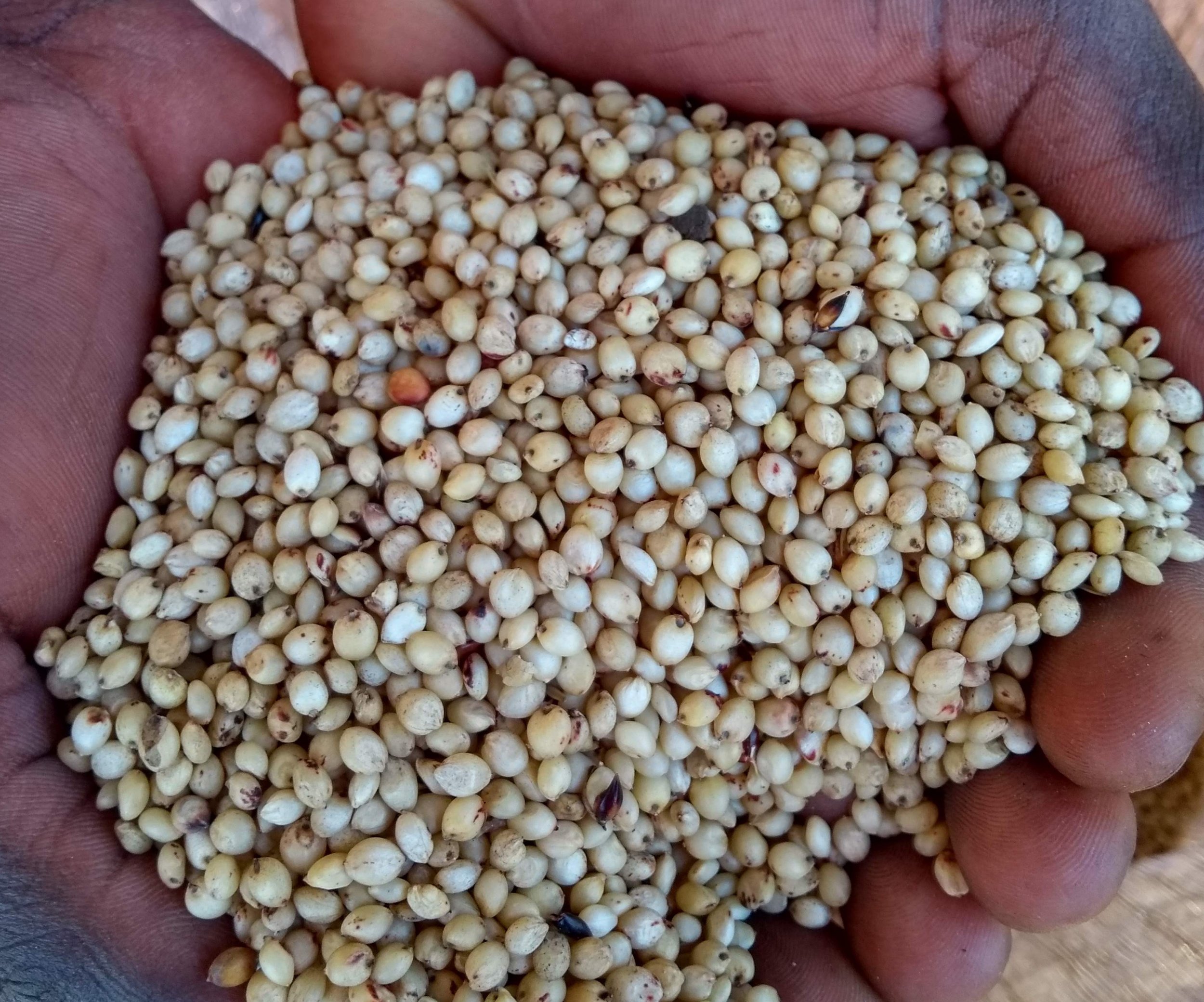
our approach
In 2021/22 we piloted our approach with 150 farmers in 3 villages in Kalomo District, Southern Zambia. We provided every farmer with a 10kg seed loan and guaranteed to purchase the grain from them at harvest. We had hoped to aggregate 70MT of sorghum but in the end we only got 10MT. Out of the 150 farmers that got seeds loans, only 26 produced a harvest. Two of the three villages we worked in did not produce any harvest and farmers that did harvest got an average yield of less than 400kg / ha
In 2022/23 we adapted our approach to focus on increasing seed loan repayment rates: we asked farmers for a down payment against their seed loan. We worked with 150 farmers again but focused on one village. This proved effective and seed loan repayment increased significantly in 2022/23 with repayments up to 50%. Sorghum yields however remained stubbornly low. The most critical factor was late planting, due to the fact that farmers were prioritizing their maize crop for early planting, but planting spacing was another contributing factor.
In 2023/24 we adapted our approach again with a focus on increasing yields. Our goal was to double yields to 1 MT / ha. We reduced the number of farmers we work with but increased the support that we provide to each farmer: we offered farmers a larger seed loan and we piloted fertilizer loans with a small number of farmers.
In 2023/24 Zambia experienced one of the worst droughts on record which resulted in 3.3 million people requiring humanitarian assistance. While their neighbors lost their entire maize harvest, sorghum farmers were able to harvest about half their normal crop providing an essential source of food & income.
Following the comparative success of the sorghum crop during the 2023/24 drought, in 2024/25 we doubled the number of farmers we worked with: supporting 200 smallholders in Kalomo district as well as collaborating with CRS Zambia to provide market access for an additional 100 smallholders in the neighboring district (Zimba). Having seen for themselves the resilience of sorghum, farmers for the first time prioritized sorghum and planted early: by November 40% of farmers had already planted their sorghum. The combination of early planting, an expansion of our ferilizer loans and more or less ‘normal’ rains led to a bumper harvest: farmers sold almost 200MT of sorghum a x20 increase compared to the previous four seasons when we aggregated a maximum of 10MT.
Given the bumper harvest in 2024/25 and increasing demand from local farmers, in 2025/26 we plan to doubled the number of farmers we worked with: supporting 400 smallholders in Kalomo district
